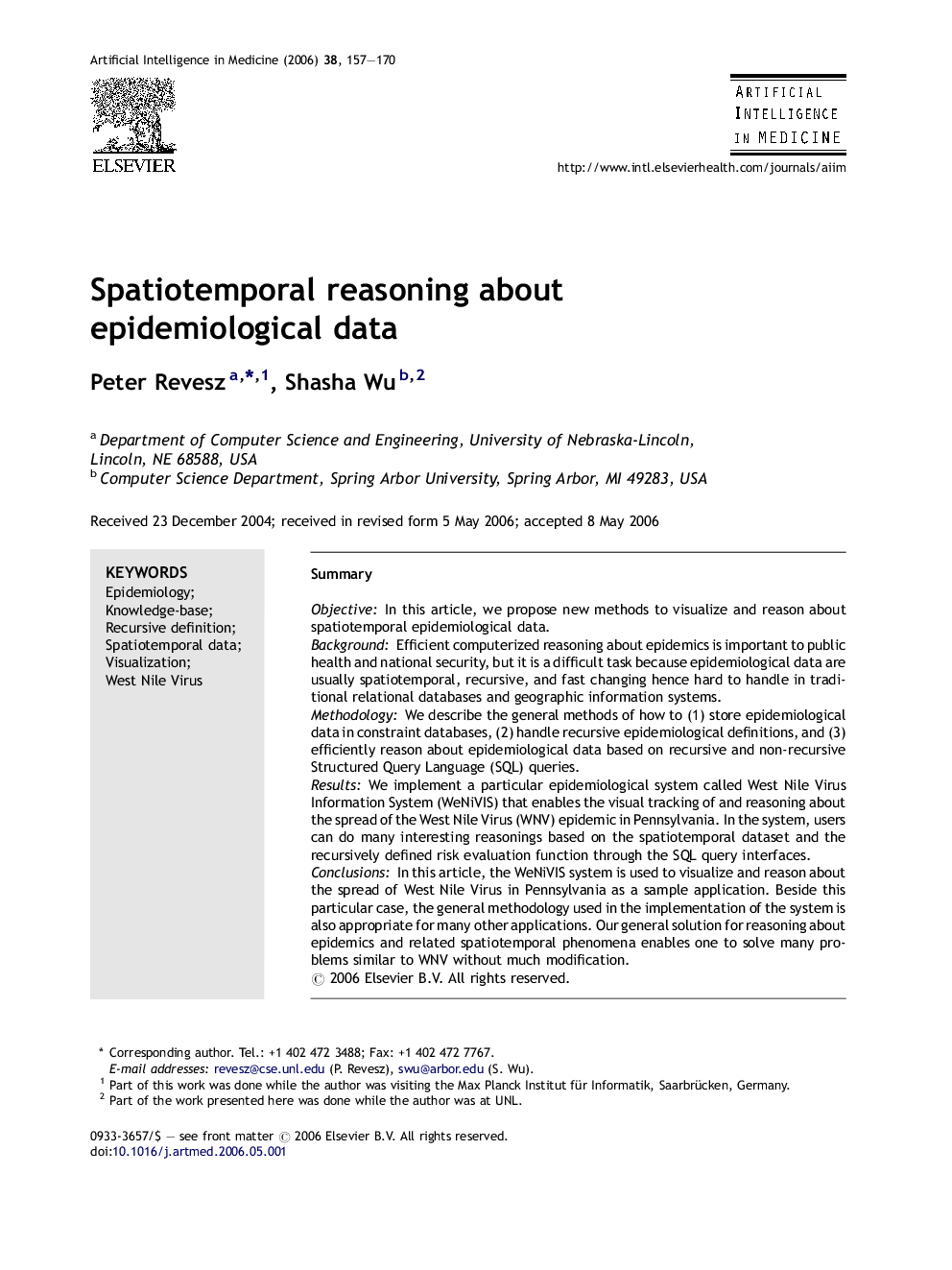| کد مقاله | کد نشریه | سال انتشار | مقاله انگلیسی | نسخه تمام متن |
|---|---|---|---|---|
| 378195 | 658901 | 2006 | 14 صفحه PDF | دانلود رایگان |

SummaryObjectiveIn this article, we propose new methods to visualize and reason about spatiotemporal epidemiological data.BackgroundEfficient computerized reasoning about epidemics is important to public health and national security, but it is a difficult task because epidemiological data are usually spatiotemporal, recursive, and fast changing hence hard to handle in traditional relational databases and geographic information systems.MethodologyWe describe the general methods of how to (1) store epidemiological data in constraint databases, (2) handle recursive epidemiological definitions, and (3) efficiently reason about epidemiological data based on recursive and non-recursive Structured Query Language (SQL) queries.ResultsWe implement a particular epidemiological system called West Nile Virus Information System (WeNiVIS) that enables the visual tracking of and reasoning about the spread of the West Nile Virus (WNV) epidemic in Pennsylvania. In the system, users can do many interesting reasonings based on the spatiotemporal dataset and the recursively defined risk evaluation function through the SQL query interfaces.ConclusionsIn this article, the WeNiVIS system is used to visualize and reason about the spread of West Nile Virus in Pennsylvania as a sample application. Beside this particular case, the general methodology used in the implementation of the system is also appropriate for many other applications. Our general solution for reasoning about epidemics and related spatiotemporal phenomena enables one to solve many problems similar to WNV without much modification.
Journal: Artificial Intelligence in Medicine - Volume 38, Issue 2, October 2006, Pages 157–170